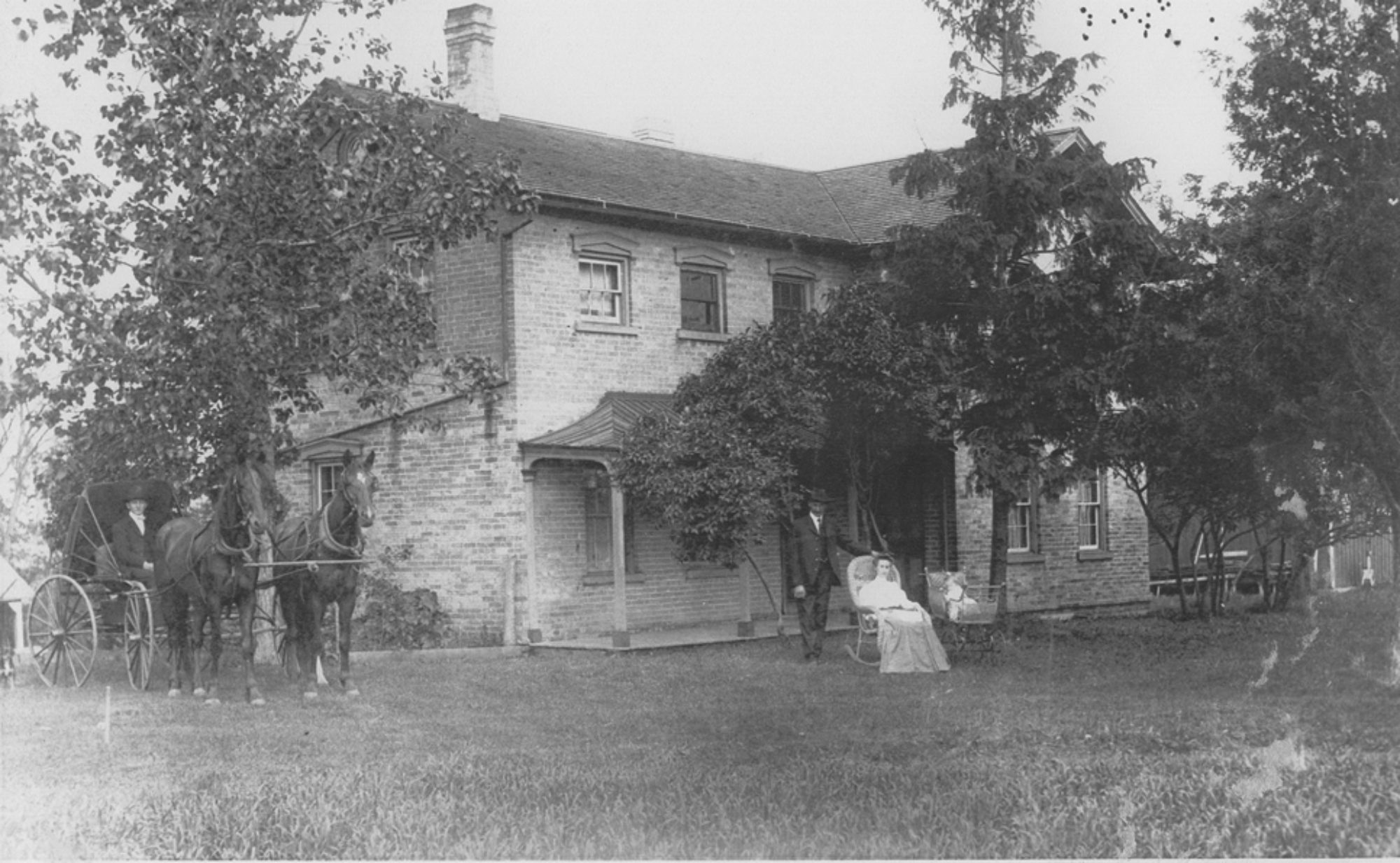ATTACHMENTS
Henry’s map of the farm (In his correspondence file)
1905 picture of the farm
Johann Langer Family Photo
Sketches various plans of the farm house
Sketch of the location of the farm buildings
Aerial photo of the farm
NOTES ON THINGS FOR ME TO FOLLOW UP ON
William E. Dervin witnessed the will — is this Hugh’s nephew???
A thought on the age of the buildings: In the six year depreciation schedule, there is a discussion of how you measure grain. This might come in handy if I can compare the granary bins with grain production figures.
House: gable el research,
When was mill built near Clyman
Would tax records help to narrow down when the house was built?
When was the house painted?
When was cheese factory built
Sale document said it was 131 acres of tillable land – so when was the last tiling done that was the highpoint of the acres- I assume this was under Francis but …
http://inventors.about.com/library/inventors/blfarm1.htm
1
The farm abstract.
2
Data from the Federal censuses.
3
The farm abstract contains a noticeable anomaly. On November 16, 1864, Hugh Dervin and his wife Ann deeded part of the farm to Joseph Smith. Exactly three years later, on November 16, 1867, Joseph Smith deeded the land back to Hugh Dervin and his wife Ann. On February 13, 1869, Hugh and Ann Dervin deeded 80 acres to Mrs. Francis Duffy. Later, when this 80 acre part of the farm was deeded to Johann Langer, the grantors were Francis Duffy and Ann Dervin. (Hugh had died in the interim on June 10, 1880). If this was truly a sale, Ann Dervin would not have been a grantor of the property. This suggests that these deeds were not actual conveyances of the property but were rather in the nature of a mortgage, also termed a ‘deed of trust’.
4
See Eiseley and Tishler, The Honey Creek Swiss Settlement in Sauk County, 73 Wisconsin Magazine of History 3 (Autumn 1989).
5
I have been unable to locate any ship manifest for Johann Langer’s trip to America. It is believed that Johann was also accompanied by his brother Wenzel and sisters Johanna and Mary when he came to America. Wenzel was married to Theresa Schmeiser and they had one small child, Joseph. Wenzel stayed in the Watertown area until late in 1868 when he moved to the Ellsworth, Wisconsin area, where other emigrants from Landskron lived. (He was a baptismal sponsor for Johann’s son Emil on July 26, 1868 and so he had not moved by that time.) Mary married John Huss in 1874 and lived in the Watertown area the rest of her life. Johanna married Ferdinand Jansa and they lived near Marshall, Wisconsin for a while on a farm that Anton helped pay for. Later they also lived near Ellsworth, Wisconsin. At least two siblings stayed in Europe. Theresa married Josef Schmeiser, the brother of Wenzel’s wife, Theresa Schmeiser. Rosalie married Joseph Maresch (Mareš) and is believed to have lived her life in the Czech village of ermná (Böhmisch Rothwasser).
6
I base this statement on two points. First, I vaguely remember my father telling me that his father had built the permanent kitchen. Second, in the attic above the current kitchen there are marks and paint on the east brick wall. These bricks would have been added during the addition of the second floor apartment and so the marks and paint would have been made after the second floor apartment was added. The marks and paint appear to be the remnants of a prior roof which was substantially shorter than the current kitchen roof. This suggests that there was some other room or structure attached to the house between the time the second floor addition was built and the current kitchen built. This prior structure most likely was a so-called summer kitchen.
7
Does this include rented land or is this merely an error by the census taker?
Open Office format 2012 version of Langer Farm History document: http://www.edlanger.com/wp-content/uploads/2015/09/Farm-History-2002-update-Sept-2012.odt
PDF of 2012 version of Langer Farm History Farm-History-2002-update-Sept-2012.odt
